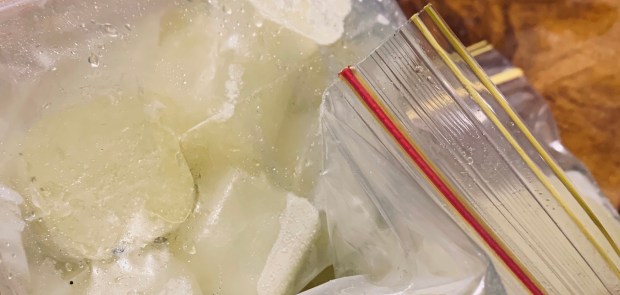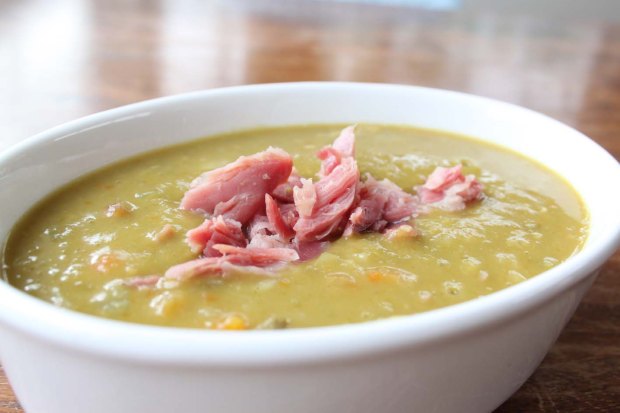It should come as no surprise to you that I consider good stock to be the single most important ingredient to have on hand in the kitchen; regardless of what the recipe says, a stock cube crumbled in water is no substitute and often adds unwanted saltiness. We are lucky to be able to buy commercially prepared stock these days and this is quite good. Always have chicken, beef and vegetable stock on hand, whether it be commercially or home made, and when a recipe tells you to add water, think about whether substituting stock would be an improvement. When Nanya boiled peas, beans or carrots, (never vegetables of the cabbage family, such as broccoli, brussels sprouts or cauliflower,) the water was always kept to be added to gravies or soups.
Campbell’s make a chicken consommé and a beef consommé, sold as canned soups, and these are excellent, as in both the stock has been reduced to a jelly and then clarified. They also make chicken, beef, fish and vegetable stocks, which are very acceptable.
Stocks add depth to dishes. They transform soups, sauces, gravies, casseroles and a host of other dishes from ‘thin’ and uninteresting, to tasty and satisfying. The three basic stocks are chicken and beef, often called ‘bouillon’, and fish, which is often referred to as ‘fumet’. You will notice that a fish fumet is made using white wine, although if the fumet is destined to be fish soup, the wine can be added later when the soup is being made.
The technique for making beef stock is different from that of ‘white’ chicken stock. It is the same, however, for roasted chicken stock. With beef stock, the beef, bones, chicken carcasses and some of the vegetables are usually roasted with a little oil or fat in a baking dish for an hour or so before being added to the stock pot. This procedure helps to colour the stock, and if it is not done at this early stage, no amount of simmering later will achieve the same result. Veal bones are often used, either with beef bones or on their own. Mushroom skins or stems and brown onion skins add colour. If making an ox-tail consommé, the beef bones should obviously be ox-tail. You will notice that demi-glace is really nothing more than a very sumptuous beef bouillon simmered very slowly for a very long time until it has reduced to sauce consistency.
Chicken stock is very easy to make, especially now that boned chicken breasts and thighs are more popular than whole chickens and most specialty chicken shops are trying desperately to get rid of the carcasses. Unfortunately some of them are mincing all their carcasses for pet mince; while this is great for the pets, it could become a disaster for cooks. Whole chickens can be used, but this is obviously expensive and quite unnecessary. If using a whole chicken, always supplement it with extra carcasses.

 Before you freeze anything at all, think about the quantities in which you may want to use it later. This applies equally to meat, fish, and to such things as demi-glace, jus, gravy, stock and pureed fruit.
Before you freeze anything at all, think about the quantities in which you may want to use it later. This applies equally to meat, fish, and to such things as demi-glace, jus, gravy, stock and pureed fruit. If you get an over abundance of limes or lemons, squeeze them and make small ice cubes. Use them for margaritas, Damascus slings or thai dressings. So much better than fake/concentrate juice.
If you get an over abundance of limes or lemons, squeeze them and make small ice cubes. Use them for margaritas, Damascus slings or thai dressings. So much better than fake/concentrate juice.



